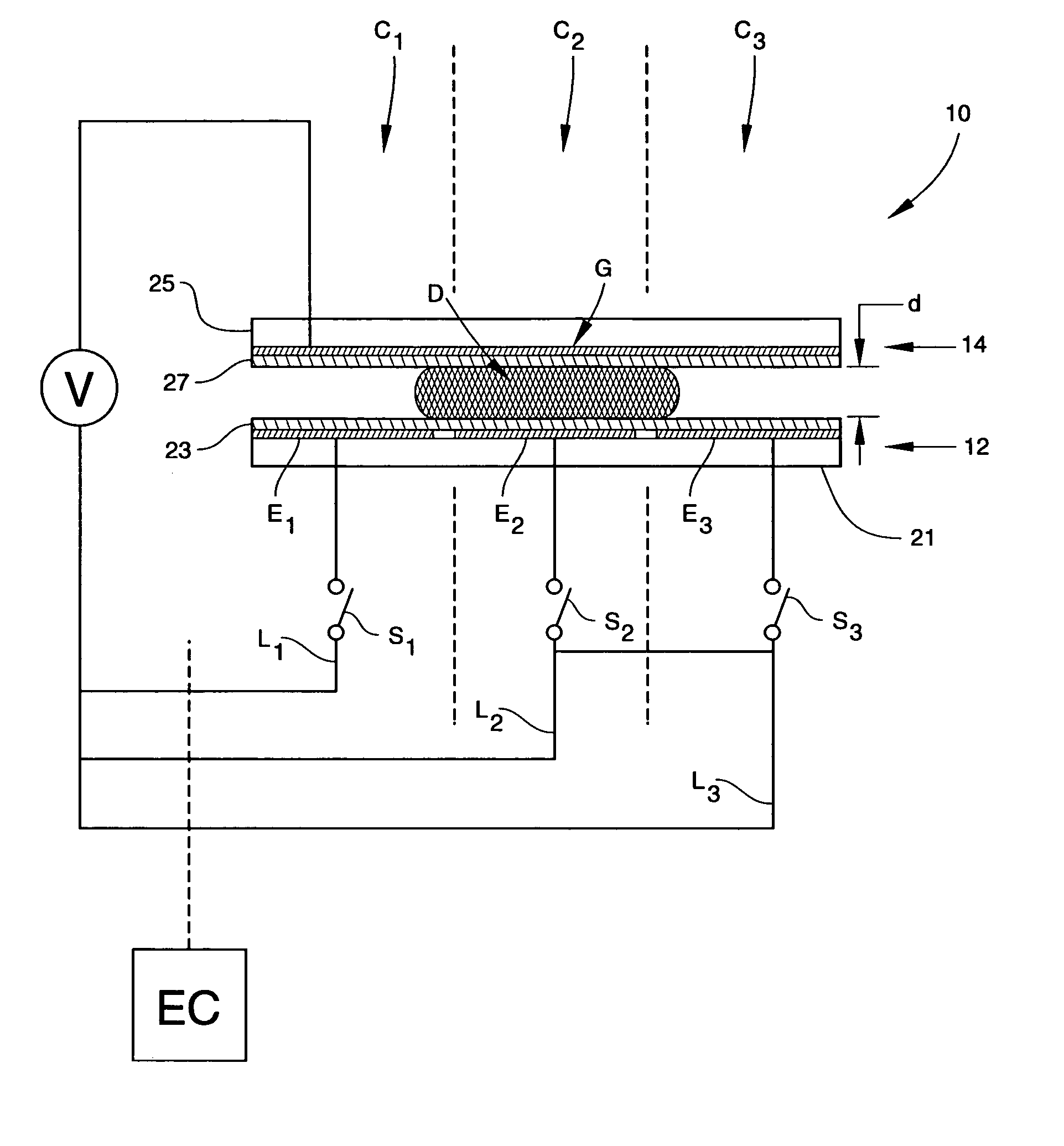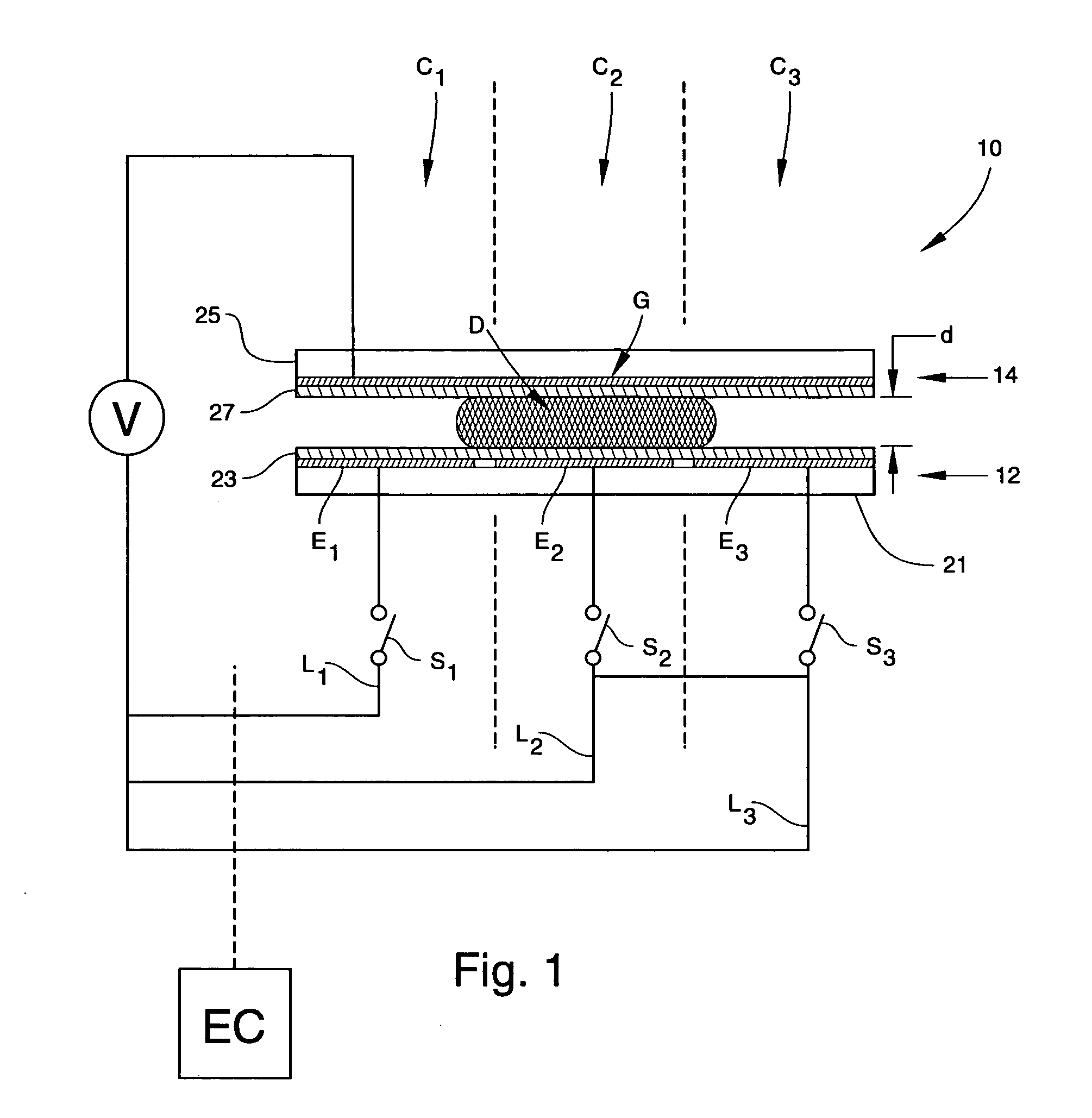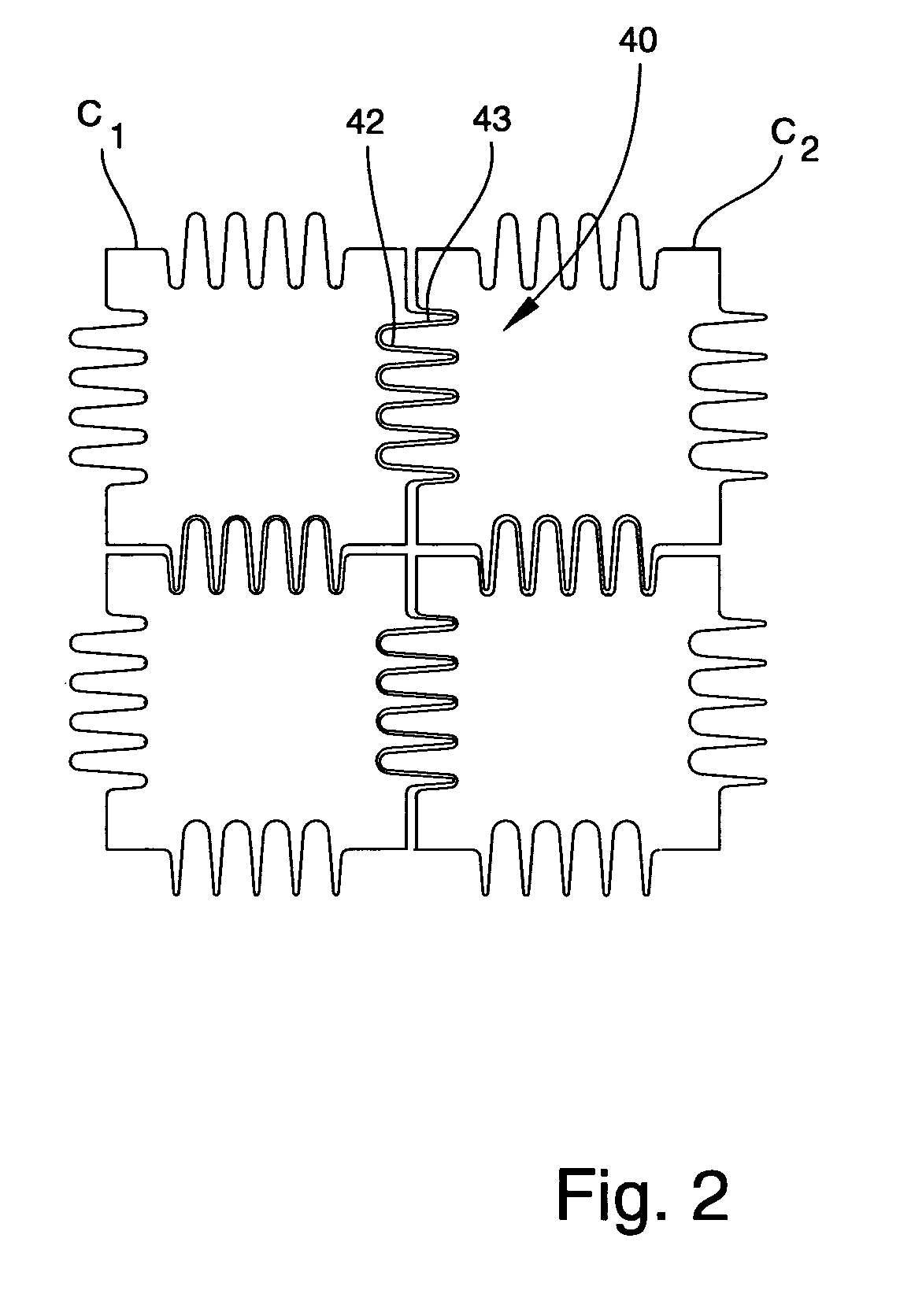Methods for performing microfluidic sampling
- Summary
- Abstract
- Description
- Claims
- Application Information
AI Technical Summary
Benefits of technology
Problems solved by technology
Method used
Image
Examples
example
[0092] A prototype device consisting of a single linear array of seven interdigitated control electrodes E at a pitch of 1.5 mm was fabricated and tested. Control electrodes E were formed by patterning a 2000-Å thick layer of chrome on a glass lower plate 21 using standard microfabrication techniques. The chips were then coated with a 7000 Å layer of Parylene C followed by a layer 23 of approximately 2000 Å of TEFLON® AF 1600. Ground electrode G consisted of an upper plate 25 of glass coated with a conducting layer (Rζ<20 Ω / square) of transparent indium-tin-oxide (ITO). A thin (˜500 Å) layer 27 of TEFLON® AF 1600 was also applied to ground electrode G. The thin TEFLON® coating on ground electrode G served to hydrophobize the surface, but was not presumed to be insulative. After coating with TEFLON®, both surfaces had a contact angle of 104° with water.
[0093] Water droplets (0.7-1.0 μl) of 100 mM KCl were dispensed onto the array using a pipette, and upper plate 25 was positioned to...
PUM
| Property | Measurement | Unit |
|---|---|---|
| Flow rate | aaaaa | aaaaa |
| Electric potential / voltage | aaaaa | aaaaa |
| Area | aaaaa | aaaaa |
Abstract
Description
Claims
Application Information
 Login to View More
Login to View More - R&D
- Intellectual Property
- Life Sciences
- Materials
- Tech Scout
- Unparalleled Data Quality
- Higher Quality Content
- 60% Fewer Hallucinations
Browse by: Latest US Patents, China's latest patents, Technical Efficacy Thesaurus, Application Domain, Technology Topic, Popular Technical Reports.
© 2025 PatSnap. All rights reserved.Legal|Privacy policy|Modern Slavery Act Transparency Statement|Sitemap|About US| Contact US: help@patsnap.com



